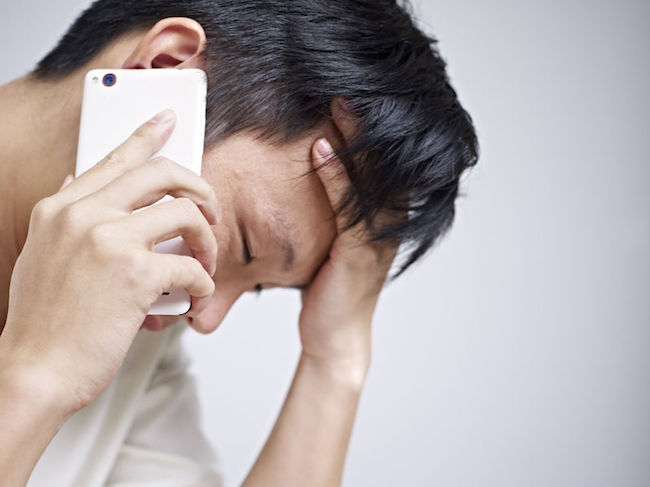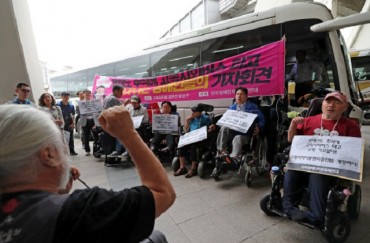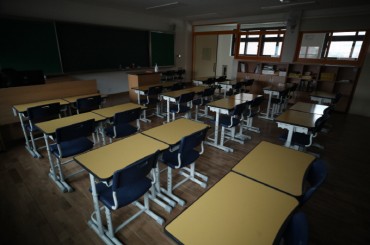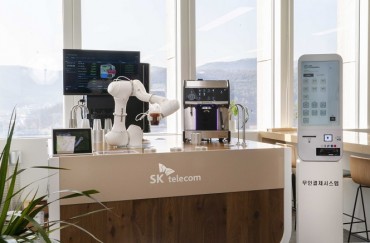
Ever since female prosecutor Seo Ji-hyeon appeared on TV and accused a former senior official in the prosecution service of having touched her inappropriately, the floodgates have opened, unleashing a seemingly endless stream of sexual harassment allegations. (Image: Yonhap)
SEOUL, March 16 (Korea Bizwire) — Ever since female prosecutor Seo Ji-hyeon appeared on TV and accused a former senior official in the prosecution service of having touched her inappropriately, the floodgates have opened, unleashing a seemingly endless stream of sexual harassment allegations.
With the vast majority of the alleged victims of sexual harassment being women, it makes sense that South Korea’s #MeToo movement is being spearheaded by the fairer sex. As the crusade against sexual misconduct continues to shed light into the conditions in which many women have allegedly suffered, some have wondered whether one specific group is yet underrepresented and overlooked by #MeToo: the male victims.
One of the reasons given to explain lower awareness of male victims is that there are relatively far fewer of them. This explanation rings true when considering sexual assault data. Official crime figures published by the National Police Agency show that only 5.1 percent of all sexual assault victims were men (2014). The Seoul Crisis Intervention Center, an institution dedicated to the support of sexual abuse victims, also found through its own analysis that 5 percent of sexual assault cases involved men as victims (2013 through 2015).
However, while these statistics do provide concrete evidence that reported counts of sexual assault are by and large perpetrated against women, data gathered by other organizations suggests that the gender imbalance is less pronounced when it comes to sexual harassment.
The Korea Labor Institute found in a study that last year, 17.5 percent of female employees had sought out counseling at work in regards to sexual harassment, with men not far behind at 13.1 percent (1,135 study participants employed in workplaces with counseling, 665 men, 480 women).
In a separate study conducted last year by KRIVET, 29 percent of employed men and women reported being sexually harassed at least once a week in the six months prior to participating in the study. Of the 3,000 participants (57.8 percent men, 42.2 percent women), 34.4 percent of women and 25 percent of men revealed themselves to have been victims.
Perhaps surprisingly, the total average number of sexual harassment cases inflicted on men in the preceding six months (6.79 times) was higher than on women (5.79 times).
Judging by the publicly available research, the evidence makes it clear that not only does there exist a contingent of male sexual harassment victims, but that in fact men might have been harassed more than women in some circumstances. This begs the question of why male victims are not playing a larger role in the #MeToo movement.
The answer was provided by one of the first male voices to say “Me Too”. In a social media post detailing his account of having been coerced into a number of sex acts by a male professor, the poster ended with, “Even though the memory of that time is so horrible and gives me chills, I couldn’t tell anyone anywhere about what happened, the reason being that I am a man.”

“Even though the memory of that time is so horrible and gives me chills, I couldn’t tell anyone anywhere about what happened, the reason being that I am a man.” (Image: Korea Bizwire)
Multiple accounts revealed anonymously by male victims refer to an environment where filing a complaint of sexual harassment can return a range of negative responses, from questioning of one’s manhood and inquiries into one’s sexual orientation to statements such as “how can a man be a victim of sexual harassment” and “you liked it too”.
Feeling pressured to live up to an ideal of manliness and to avoid facing ridicule by what is perceived to be weakness, men were far more likely than women to keep their troubles to themselves. The Ministry of Gender Equality and Family’s found in a study that half of female victims shared what happened to them with someone, while only 14 percent of men did the same.
With reportedly around 50 percent of male victims suffering from depression and anxiety (2015 figures), those familiar with male victims’ difficulties have called for the elimination of the stigma associated with stepping forward and for a paradigm shift that recognizes a sexual harassment victim as a “person” and not as a “woman”.
To accomplish this change in perspective, experts stress that the notion that sexual harassment equates to a man acting inappropriately with a woman must be discarded. Countering the notion that sexual harassment occurs only in heterosexual interactions, KRIVET’s study discovered that 86.4 percent of the harassers of men were men, with only 13.6 percent being women.
With abusers of men being overwhelmingly male, it is little surprise that such incidents frequently occur in single-gender settings.

An individual working for a sexual violence relief organization said, “Cases of sexual assault against men mainly occur within imbalanced power relationships of superior and subordinate in the military, all-male schools and physical education programs, environments where there are lots of men.” (Image: Yonhap)
An individual working for a sexual violence relief organization said, “Cases of sexual assault against men mainly occur within imbalanced power relationships of superior and subordinate in the military, all-male schools and physical education programs, environments where there are lots of men.”
With research showing that 78 percent of sexual harassment offenders in the workplace occupy a higher status in relation to the victim, regardless of gender, focusing on curbing the abuse of power and not on the gender and cultural expectations of the victims would be a means of enhancing the safety of both sexes, as well as opening the door for men to divulge their past trauma without fear of being stigmatized.
This is what #MeToo has stood for all along. A representative of the Korean Women’s Development Institute said, “The core cause of #MeToo stems from the imbalance in relationships created by power.”

A representative of the Korean Women’s Development Institute said, “The core cause of #MeToo stems from the imbalance in relationships created by power.” (Image: Yonhap)
Lina Jang (linajang@koreabizwire.com)







It is the problem of Korea. women need protection.
Hi, this weekend is nice in favor of me, for the reason that this time i am reading this enormous informative article here at my residence.
a pride for me to be able to discuss on a quality website because I just learned to make an article on
is the best a pride for me to be able to discuss on a quality website because I just learned to make an article on